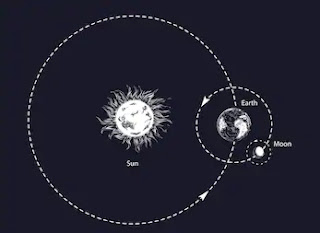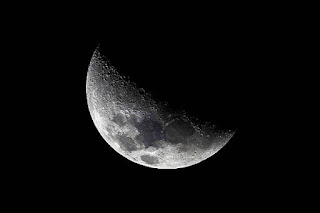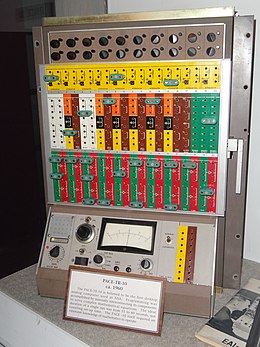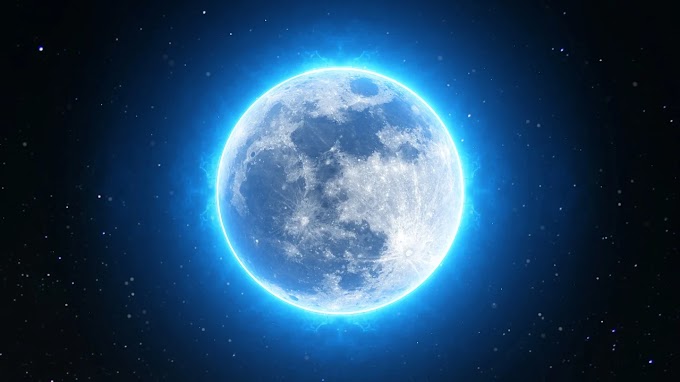moon
It's the brightest and most noticeable object in the night sky, but if you spend much time observing it, you will see that the moon is never quite the same from one night to the next. The moon has something we call 'phases,' which means that it appears to change shape a little bit every night.
To understand why this happens, we need to talk a little bit about the way the Earth and the moon move together in space.
The moon orbits around the Earth, much like the Earth orbits the sun. However, while the Earth takes about 365 days to travel once around the sun - one year - the moon completes its orbit around the Earth in only 29 and a half days - or about one month. That's actually where the idea of months came from - the time it takes for the moon to complete one orbit around the Earth - and the words 'moon' and 'month' come from the same root.
Despite how bright it looks in the sky, the moon does not have any light of its own. It only appears to shine brightly in the sky because light from the sun hits it and bounces off. Just like the Earth, the moon has a day side and a night side, with half of it in sunlight and half of it in darkness at anyone time. As the moon travels through its orbit around the Earth, that dividing line between day and night, called the terminator, is visible from different angles, giving the impression that different amounts of the moon are lit up on different days.
The cycle of lunar phases begins with the'new moon.' At new moon, the moon appears completely dark because the unlit side is facing the Earth. The New moon is the only time in the lunar cycle when a solar eclipse could happen, because it is the only time that the moon is between the sun and the Earth. After a few days, once the moon has moved along a little in its orbit, we can begin to see some of the moon's day side from Earth. What we see is just a thin slice of light, called a crescent. We call it a 'waxing crescent,'because 'waxing' means 'growing.' The crescent moon will grow a little bit thicker every night until it reaches the next phase: first quarter.
The first quarter moon is sometimes called the half moon because it appears to us that half of the moon is illuminated, but it is called 'first quarter' because the moon is one-quarter of the way through its cycle. As the days pass, the moon continues to grow, soon entering its next phase, the waxing gibbous. Gibbous means 'humped' or 'swollen,' and again, we call it waxing because it grows thicker every night until it reaches the next phase, the full moon.
A full moon is the biggest, brightest, and easiest phase of the moon to see. The moon rises at sunset and is up all night, so if you are outside and the sky is clear, it's hard to miss. The moon is halfway through its orbit around the Earth, and is now on the opposite side of the Earth from the sun. During a full moon is the only time that a lunar eclipse can happen, because that is the only time that the Earth's shadow could fall on the moon.
As the moon continues in its path, it appears to shrink again as we begin to see more and more of its dark side. A few days after the full moon the moon will be a gibbous again, but this time it's a waning gibbous. 'Waning' means shrinking, or getting smaller, and so the moon will be waning for the rest of its orbit.
The next phase is another half moon, but this time it's called 'third quarter' or sometimes 'last' or 'final' quarter, because the moon is three-quarters of the way through its orbit. Soon the half moon shrinks into a waning crescent, which will continue to shrink night after night until it vanishes completely into the next new moon. Big and bright and beautiful, different every night but repeating the same cycle over and over, the moon is one of the best objects in the sky to observe, especially for someone just getting started.











0 Comments